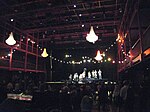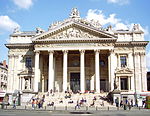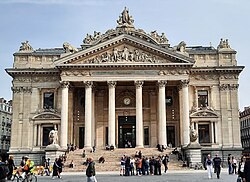Saint-Géry Island
City of BrusselsCommons category link is locally definedFormer islandsGeography of BrusselsHistory of Brussels

Saint-Géry Island (French: île Saint-Géry) or Sint-Goriks Island (Dutch: Sint-Gorikseiland ) was the largest island in the Senne (Zenne) river in Brussels, Belgium. It was named after Saint Gaugericus of Cambrai, who built a chapel there around 580; hence the name "Brussels", which comes from Bruocsella or Broekzele, meaning "settlement in the marsh". It ceased to exist as an island when the Senne was covered over in the late 19th century.
Excerpt from the Wikipedia article Saint-Géry Island (License: CC BY-SA 3.0, Authors, Images).Saint-Géry Island
Place Saint-Géry - Sint-Goriksplein, City of Brussels Pentagon (Brussels)
Geographical coordinates (GPS) Address Nearby Places Show on map
Geographical coordinates (GPS)
| Latitude | Longitude |
|---|---|
| N 50.8481 ° | E 4.3476 ° |
Address
Zebra bar
Place Saint-Géry - Sint-Goriksplein 33
1000 City of Brussels, Pentagon (Brussels)
Belgium
Open on Google Maps










